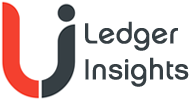Broadridge has integrated its Distributed Ledger Repo (DLR) solution with Fnality’s tokenized payment platform. Its first demonstration enables the settlement of intraday repo transactions using delivery versus payment involving central bank money.
Fnality, backed by 20 global institutions, recently confirmed it has applied for a US banking license after going live in the UK. It provides a tokenized settlement system for institutions, in which the shared tokens are backed by central bank reserves.
Repurchase agreements, or repos, enable those holding high quality assets such as Treasuries to swap them for cash temporarily to meet short term needs. The parties typically reverse the transaction shortly afterward, often overnight. The institution advancing cash earns interest, and covers its risk by temporarily owning the high quality collateral.
This demo represents a collaboration between two of the most promising institutional solutions in the tokenization space, with Broadridge already processing around $1.5 trillion in transactions monthly.
“The move towards instantaneous settlement will be pivotal in strengthening the financial sector’s growth and global competitiveness,” said Michelle Neal, CEO of Fnality International. “Fnality and Broadridge are at the forefront of this evolution, providing the critical infrastructure needed to support accelerated settlement and unlock new efficiencies across global financial markets.”
While Fnality was early to declare plans to expand internationally, this is Broadridge’s first step towards expanding its DLR platform into Europe.
When we chatted last year with Broadridge’s Horacio Barakat, he mentioned that Broadridge was exploring a handful of digital cash solutions. It has already integrated with JPM Coin – now renamed to Kinexys Digital Payments.
DLR use cases – repo & tokenized collateral
DLR has two major uses cases currently. It supports repo across whatever term the client chooses, including intraday which takes advantage of its ability to instantly transfer the ownership of collateral.
A second important use case is sponsored repo. Only a few large operators, mainly banks, directly participate in central clearing of Treasuries at the FICC. These larger players provide a conduit to other parties such as brokers or hedge funds, ‘sponsoring’ them for clearing purposes.
At its heart, DLR isn’t just about repos. To enable DLT repo transactions, conventional Treasuries are locked and digitized or tokenized. Hence, some DLR clients use this core Treasury tokenization feature, especially for transferring ownership between separate entities in the same group.
Today many have started to appreciate the potential for tokenized collateral to mitigate risks by using it for margin requirements. Instead of only using cash to meet intraday margin calls, digital collateral can be moved instantly. The Commodity Futures Trading Commission (CFTC) has announced pilots to explore the potential.
DLR to benefit from Treasury market changes
Currently Treasuries are centrally cleared only via the DTCC subsidiary, FICC. But the clearing participants and clearing rules are in flux.
Last year both the CME and ICE said they planned to launch clearing services for Treasuries. It’s an attractive opportunity for them, because of new SEC rules requiring central clearing for both Treasury cash market transactions and for repo. In February the SEC delayed the first March deadline by six months and the main deadlines by a year, but the changes are still coming.
This may reduce the demand for sponsored repo if more institutions clear directly via the new clearing providers. However, given the new SEC rules requiring central clearing, it’s more likely to temper sponsored repo growth, rather than reducing demand. At the same time, additional covered clearing agencies (CCAs) such as ICE and the CME will fragment the clearing process. Potentially, an institution might need to post margin at multiple clearing venues.
Broadridge’s DLR stands to benefit in two ways. Firstly, the ability to instantly move collateral smooths the path in moving margin from one venue to another. Secondly, more central clearing will require more margin, potentially increasing the demand for intraday repo. Additionally, intraday repos are excluded from the central clearing rules.
“We believe the seamless availability of collateral would be one of the main use cases for these type of platforms, particularly ours,” Barakat observed last year.






